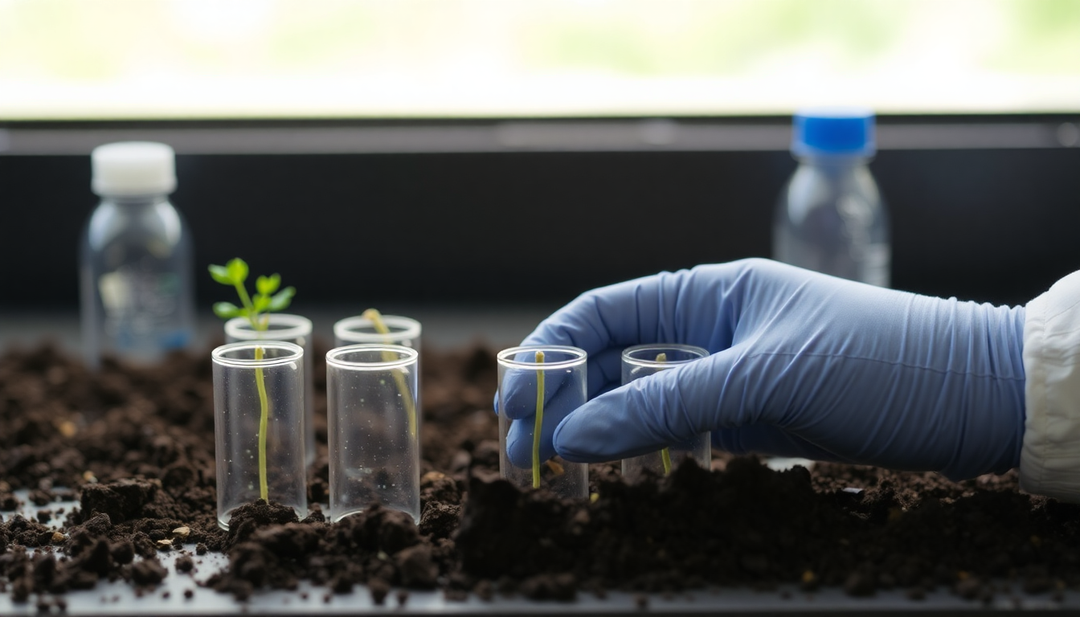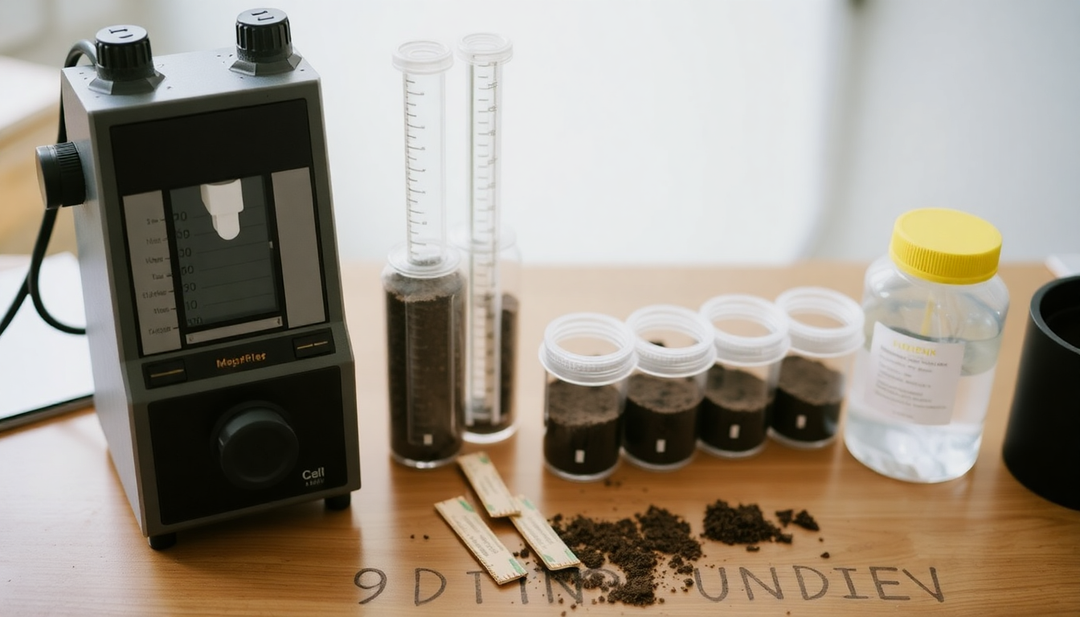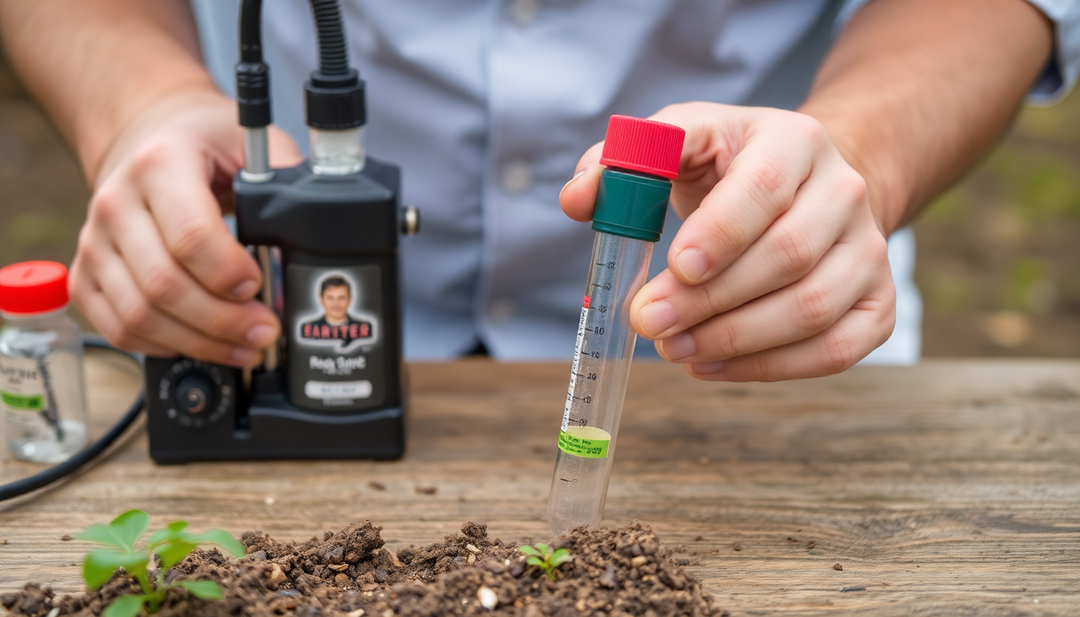Performing a soil test: 5 advantages!

How do you know what's in your soil?
A home soil test kit offers tremendous benefits for understanding the health of your garden and your wallet. Instead of blindly applying fertilizer or making rough estimates of soil pH, you can save money and time with real data about your garden's soil. Logan Hailey, a former organic farmer, explains the benefits of soil testing and how to perform it as a beginner.
"Whether you're establishing a new garden, measuring fertilizer, or diagnosing a yellowing plant, how do you know what's going on in your soil? You don't have to make random guesses that could waste time or money. The benefits of soil testing include more accurate amendment applications, better plant health assessments, and less risk of overfertilization.
Soil testing may seem too scientific or complicated for home gardeners, but new lab offerings have made the process more accessible. Simply take a few samples, mail them in, and receive a detailed analysis of your soil's contents.
Historically, testing was primarily used by commercial growers and scientists, but modern innovations make it easier than ever for home gardeners to understand what's going on underground. Here at Pouryère, we wanted to develop a test that simplifies collection, provides comprehensive results, and includes clear recommendations for improving your soil.
Why should you test your garden soil?
Soil analysis conducted by COFRAC- accredited laboratories is the most scientifically accurate way to determine which nutrients are present in plants and how much fertilizer you should apply. This is the first time that soil analysis for individuals has existed in this form. The tests are important for understanding pH, micronutrient imbalances, and potential deficiencies.
An analysis can help you avoid overfertilizing so you don't contribute to nutrient leaching or other environmental problems. Better yet, testing can save you money and time by helping you streamline your amendment applications.
5 Benefits of Soil Testing in Your Garden
How do you know what's in your soil? You can wait until plants show symptoms of deficiencies and problems, or you can take proactive steps to properly amend your soil for the best possible plant growth.
Testing is a simple way to ensure you're providing your plants with the nutrients they need while avoiding overfertilization. A thorough analysis of your garden soil can increase yields, improve plant health, reduce environmental problems, and save money! Here's how soil testing can benefit a gardener:
Making Informed Fertilizer Decisions
Fertilizing can feel like a guessing game, which can lead to problems like under-fertilizing, over-fertilizing, or fertilizer leaching. Instead of blindly applying plant nutrients, a soil test will provide you with a scientifically proven number indicating which nutrients are currently present in your garden. You can then use these numbers to calculate how much fertilizer or compost to apply to meet your plants' needs.
Plants need both macronutrients and micronutrients to thrive. Macronutrients are the three typical fertilizer ratios needed in the greatest quantities to support plant growth:
N = Nitrogen: The most crucial nutrient for leaf and stem growth, nitrogen promotes vegetative growth and contributes to the overall green health of plants. It is a key component of chlorophyll, which is crucial for photosynthesis.
P = Phosphorus: Essential for energy storage, root development, flowering and fruiting, phosphorus promotes strong roots and reproductive growth.
K = Potassium: This nutrient is essential for enzyme activation and water absorption. Potassium increases the plant's resistance to disease and drought. It also improves the strength of plant cells.
There are also secondary macronutrients, which are minerals that plants need in moderate amounts:
S=Sulfur: It is a key component of amino acids, proteins and plant vitamins.
Ca=Calcium: Essential for cellular wells and the strength of plant tissues, calcium prevents disorders such as blossom end rot.
Mg=Magnesium: Plants cannot photosynthesize or absorb other nutrients without magnesium.
Micronutrients are essential for plant growth and performance, but they are needed in smaller amounts. They include:
B=Boron: Vital for cell division, pollen transfer and seed development.
Zn=Zinc: Helps plants produce enzymes and growth hormones.
Mn=Manganese: Involved in photosynthesis and nitrogen metabolism in plants.
Fe = Iron: Iron is part of the chlorophyll molecule and is essential for energy production in plants.
Cu = Copper: Plants cannot respire or metabolize nutrients without copper.
Mo = Molybdenum: This nutrient is essential for nitrogen fixation.
Cl = Chlorine: Chlorine contributes to water movement and proper pressure in plant cells.
Most tests measure these nutrients. However, it's important to note that not all soil tests are created equal! There are many different types of lab tests, some more accurate than others. In the past, labs were primarily marketed to commercial growers, meaning their reports were calculated based on acreage and pounds of fertilizer. For this reason, it's best to use a gardener-specific test, such as the Pouryère Soil Test Kit, to ensure your results are applicable to a smaller-scale garden.
Most importantly, some tests provide easy-to-read results, while others use complicated scientific jargon. Therefore, for a test to be truly useful in the garden, you need to be able to understand what the numbers mean. Pouryère soil tests, in this sense, are easy to understand and read.
Ensure good yields and healthy plants
Think of a soil test like a blood test at your doctor's office. These tests indicate the minerals and vitamins present. Just like the human body, plants need nutrients to stay strong and healthy.
You won't win a marathon if your blood lacks certain vitamins. Similarly, a tomato plant won't produce without the proper minerals.
Understanding soil composition helps create a better environment for plant growth. Nutrient problems are also a major cause of declining yields. Plants cannot produce at their peak without the necessary nutrients.
Whether you're starting a new garden or evaluating an established bed, a soil test is essential. This allows you to meet your plant's needs so it can produce abundantly this season.
Correct pH problems
Soil pH describes its acidity or alkalinity. The pH scale measures acidity from 0 to 14. Most healthy garden soils have a pH around 7, which is considered neutral. However, an improper pH makes it difficult for plants to grow and absorb nutrients.
Every plant has an optimal pH level for growth. Most vegetables prefer a neutral pH between 6.0 and 7.0. Others, such as blueberries and rhododendrons, require more acidic soil, between 4.5 and 5.5. Few plants tolerate alkaline soil (above 7.3), as it reduces nutrient availability.
Many amendments can adjust pH, but it's essential to test first. Home pH tests are useful, but less accurate than a lab test. By sending a sample with the Pouryère soil test kit, you'll receive a thorough analysis of your soil and recommendations.
Common pH adjustments include:
- Agricultural lime : fixes acidity and increases pH.
- Dolomite : increases pH.
- Sulfur : Makes soil acidic to improve nutrient availability.
- Pine needles : Gradually lowers pH over several years.
- Peat moss : Gently lowers pH over the long term.
- Gypsum : Does not directly lower pH, but helps with calcium availability.
Diagnose nutrient deficiencies and plant problems
Many novice gardeners under-fertilize or over-fertilize their plants. A deficiency means the plant isn't getting enough of what it needs. Nutrient balance, on the other hand, is more complex.
Nutrients interact with minerals and microorganisms in the soil. A delicate balance is necessary, as an excess of some nutrients can cause deficiencies in others.
For example, too much potassium can prevent the absorption of nitrogen and calcium. If a plant has yellow leaves and slow growth, it might appear to be suffering from a nitrogen deficiency. A test might show that there is plenty of nitrogen, but the potassium is preventing its absorption.
Soil is a complex ecosystem, indeed, composed of billions of microorganisms and various reactions. I've studied soil science in depth, and it can become overwhelming for many gardeners. Some, in fact, devote their lives to soil microbiology and chemistry. Furthermore, discoveries are constantly evolving, making some data obsolete over time.
I chose to grow plants rather than analyze them in depth. Most of us are gardeners, not chemists. Soil tests help you understand your plants' needs without getting bogged down in complex data. They will indicate which nutrients are lacking and which are in excess. If there's an imbalance, the lab report will warn you of toxicity, such as nitrogen toxicity.
Order a test kit
While soil testing labs can be excellent partners, their level of service varies depending on the clientele they serve. If you order a Pouryère soil testing kit, you'll receive everything delivered directly to your door so you can take your samples independently. Then, simply send it directly to the lab using the return label provided in the kit.
The kit includes
- The procedure for taking the sample
- A collection bag
- A reusable shipping box
- A prepaid return shipping label
- Laboratory analysis costs
- The personalized analysis and recommendation report



